STUDENTS PROJECTS
PROJECTS2013
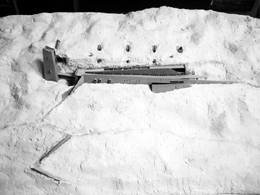
18 April, 2014
The rack railway museum at Vouraikos gorge
The intense spatial relationship between the built space and the mountain.
Student : Alexandropoulou Zoi
Supervisor : Tsiraki Sophia
School of Architectural Engineering of the National Technical University of Athens
Presentation date : 13/03/2013
DESCRIPTION: The museum is proposed under a thematic of concentrating exhibits relative to the rack railway as a space that accommodates, protects and highlights the wagons that have appeared throughout rack train history since 1896. In parallel, it invites the visitor to experience the building and the mountain as a geological voyage, and as a simulation of the train's route in the canyon, interpreted through architecture.
The existing rack railway moving along Vouraikos gorge, the only one slivering the Northeast Achaia relief at great length creates a direct connection between Kalavrita and Diakopto. As a landmark, the proposed museum signifies by stimulating both the canyon's beginning and ending. The building is part of a potential wide landscape intervention, with an emphatical sculptural flair, that includes meandering paths on the slope, descent to the riverside, river crossing through a bridge and a new train station on the other side. The museum collects the rack railway's history and it is a parallel to the route in the canyon. It is situated at the gorge's edge, where the mountain mass of Helmos meets the seaside zone. Not locating it close to the rail lines side is a symbolic act, as well, since it withdraws from the railway to dialectically address it. It stands across it as a conceptual and visual reference to it.
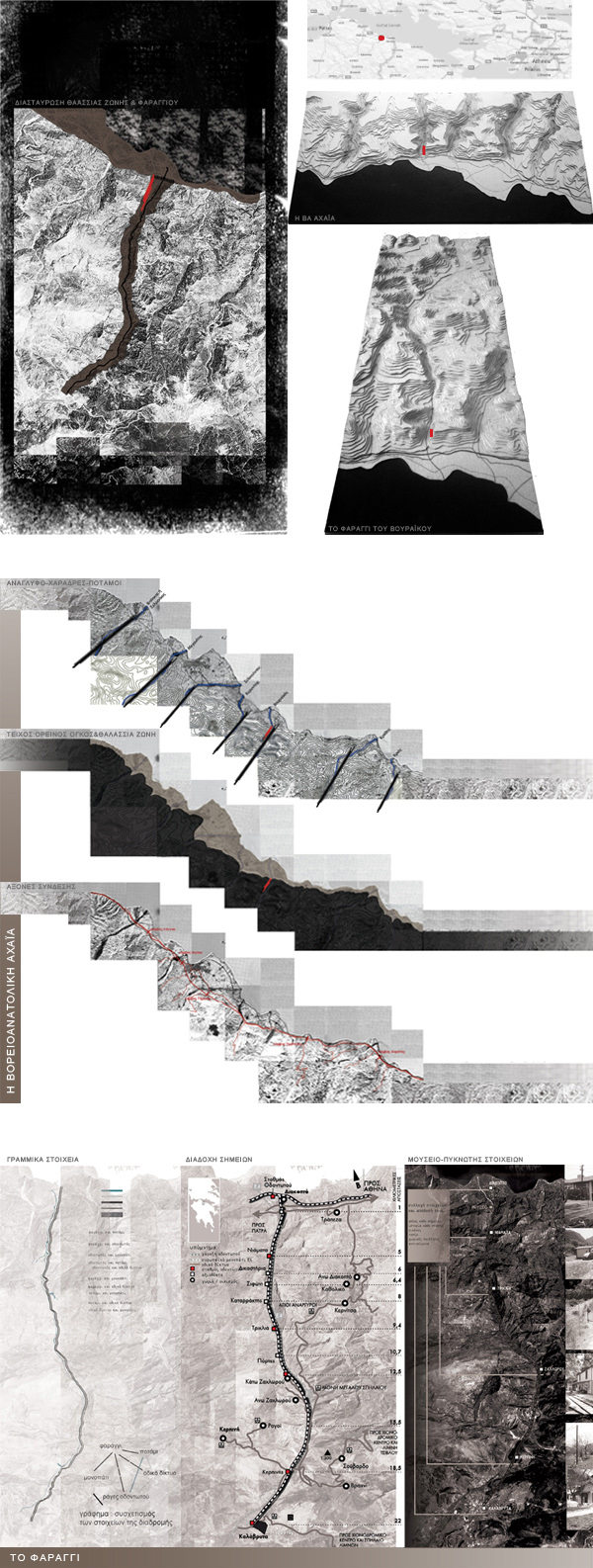
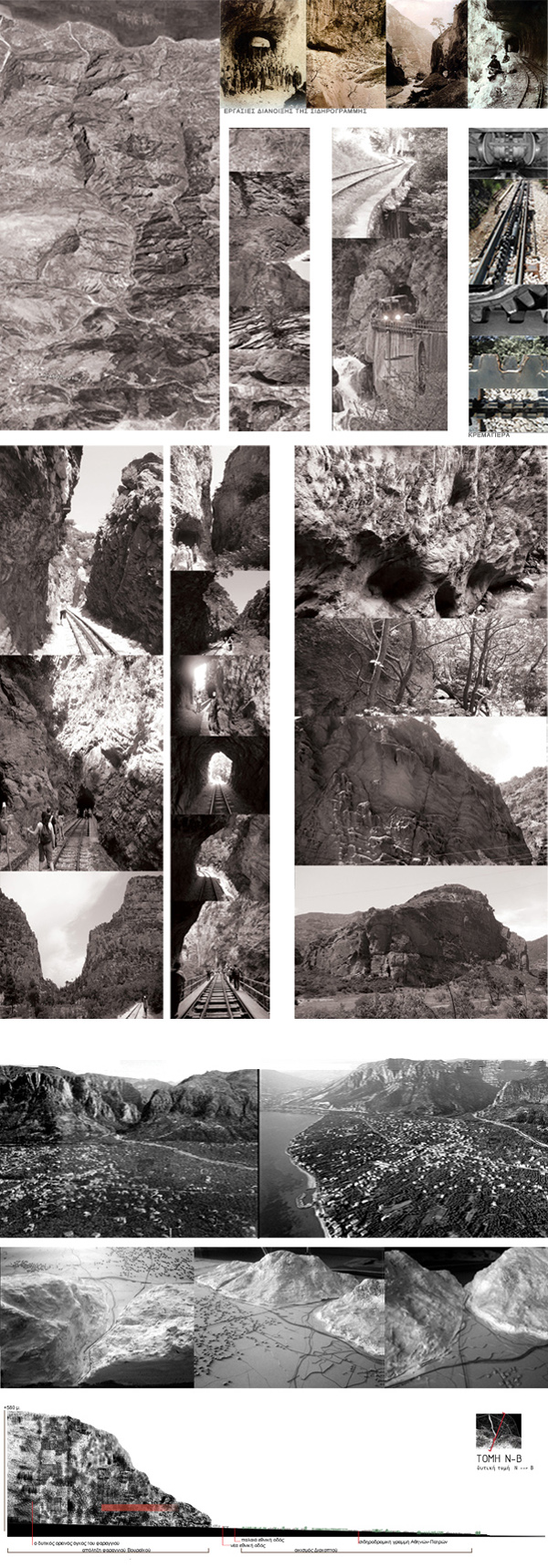
The museum's concept has been influenced by:
-the train's constant uplift [extensive ramps throughout the building],
-the extensive gorge [linearity of the design],
-the clash of the natural element and the man-made landscape [the rocky mountain limits and concrete walls]
-the necessary circuitry movement
-and the intention for a whole landscaping [integration in the landscape].
Parallel transversal sections in characteristic spots along the gorge, reveal the correlations between the train route and the compact mountain mass. The following spatial qualities are detected and abstractly codified:
_ suspension over the gorge
_ tunnel inrush
_ combination of the above
_moving in tangent with the mountain
_the stony movement-defining natural limits
_textures of the natural or manmade gates
_ galleries
The museum constitutes of a succession of those coded spatial relations. It attempts a condensation, simulation and embodiment of plural elements of the train's route in the architectural design, that verifies the spatial relation between the rack train and the mountain, in a series of the spatial qualities prior mentioned.
The motion-circuit makes the visitor move in parallel with the mountain in the following sequence:
_upwards with the first ramp: This longitudinal space between two concrete shear walls, with a linear slit on the roof and side openings, allows perspectives of the opposite bank.
_with a transitional semi outdoor space-ramp: The visitor moves between built space and the mountain under a glass roof, whose transparency leads the eye upwards, intensifying the presence of the mountainous slope that rises to great altitude.
_through the mountain: This cavernous tunnel hosts parts of the exhibition route within the very mountain.
_through the tower and towards the end of the promenade: This space hosts the café and temporary or supplementary exhibitions, where the visitor proceeds through a shear wall and the gorge, in a space of controlled natural light and a revealing opening at the end of the linear route, approaching the end of the museum tour.
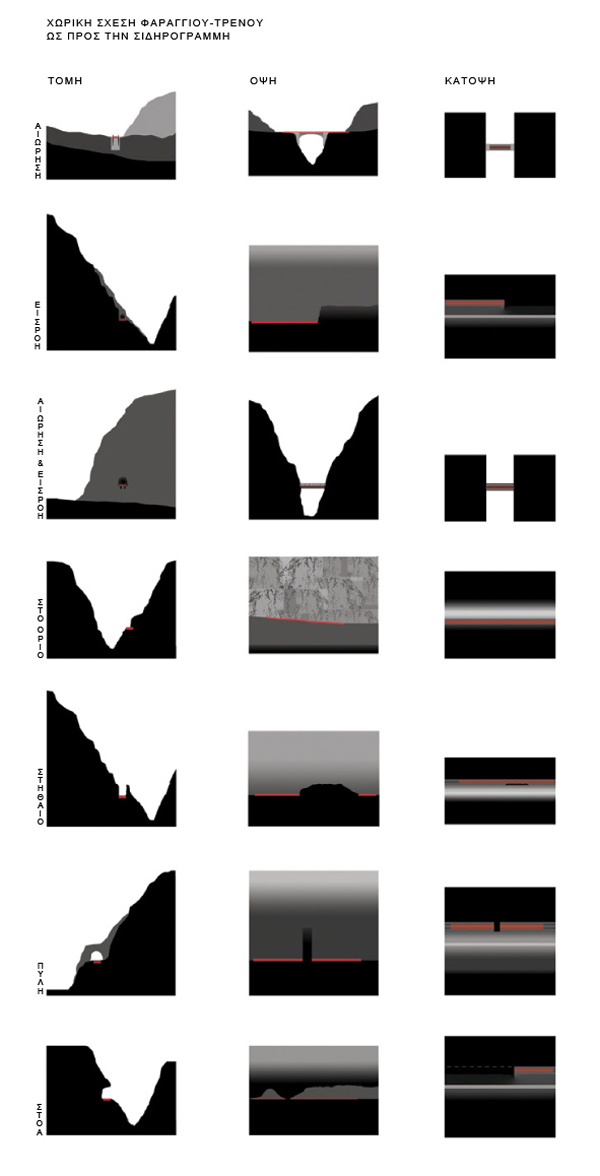
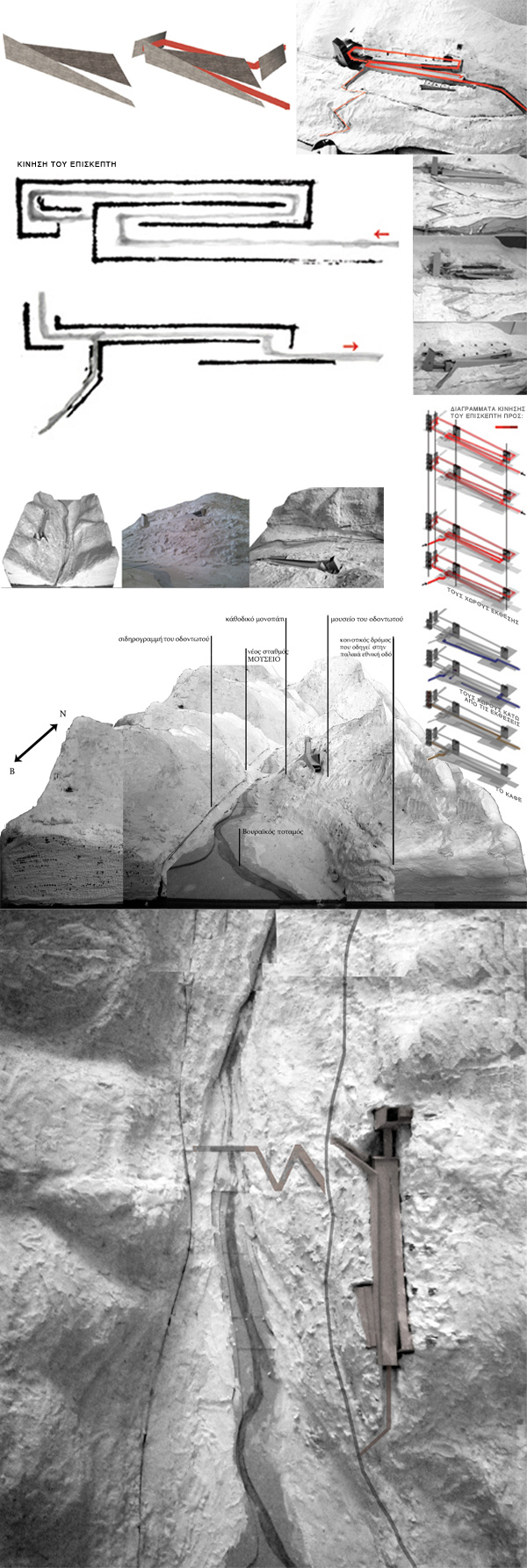
The two elongated shear walls, asymmetrical blades, are in parallel with the slope contours and indicating an upward motion. The light enters through frames on the concrete surface that escalates sculpturally referencing the "cremayera" (rack tooth-like mechanism). Linear blinds and concrete beams emerging from the rock apply rhythm to the glass roof and the movement below.
Fair-faced reinforced concrete used in the building adapts the monolithic character of the steep landscape and allows for a dialectic juxtaposition between the design and existing constructions of the rack railway network.
The building is intended as a situation, a distinct condition, a non-building, a semi-outdoor situation, where the visitor interacts with the rock in a tactile, multisensory experience. It is all about a relationship between the built space and the natural landscape. Overall, the synthesis consists of two organic entities: the "negative space" of the rock and the artificial construction, which in collaboration manage to articulate and produce space.
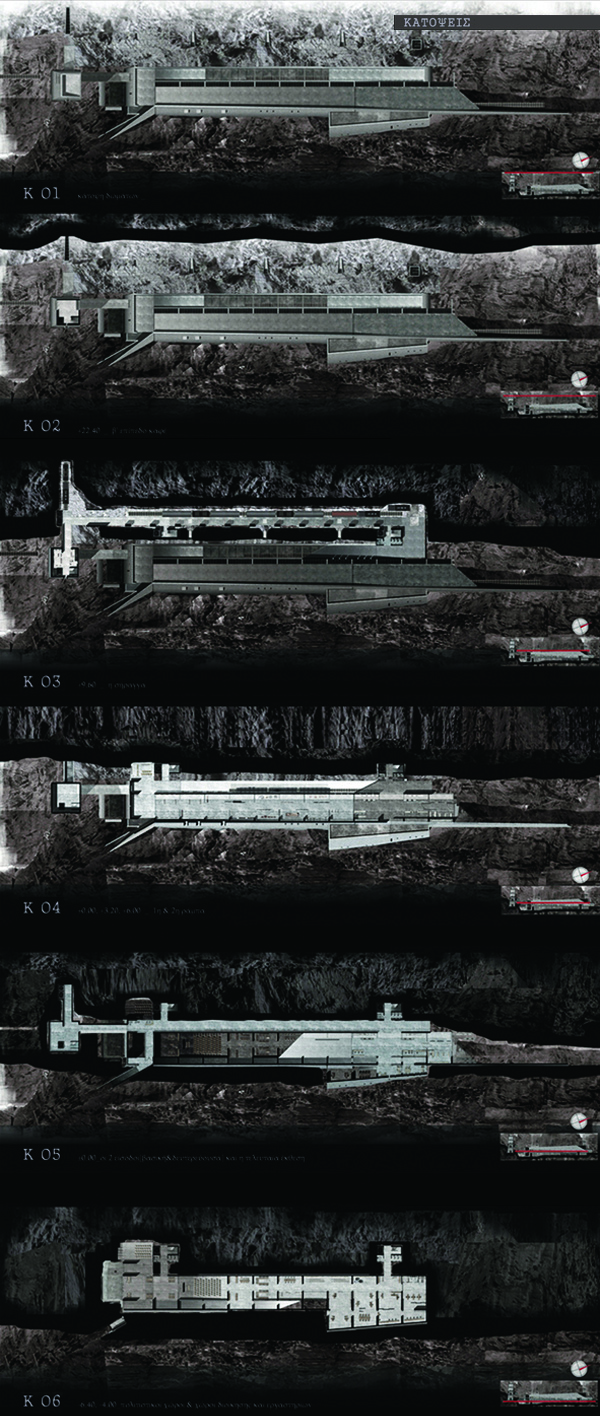
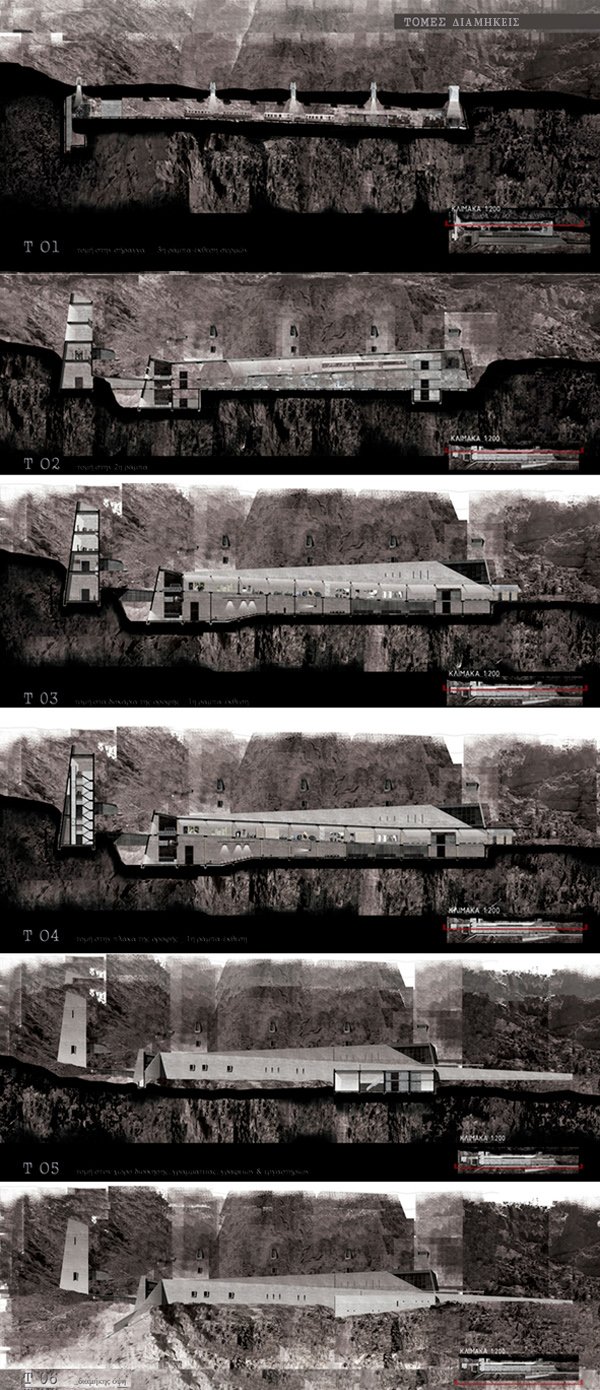

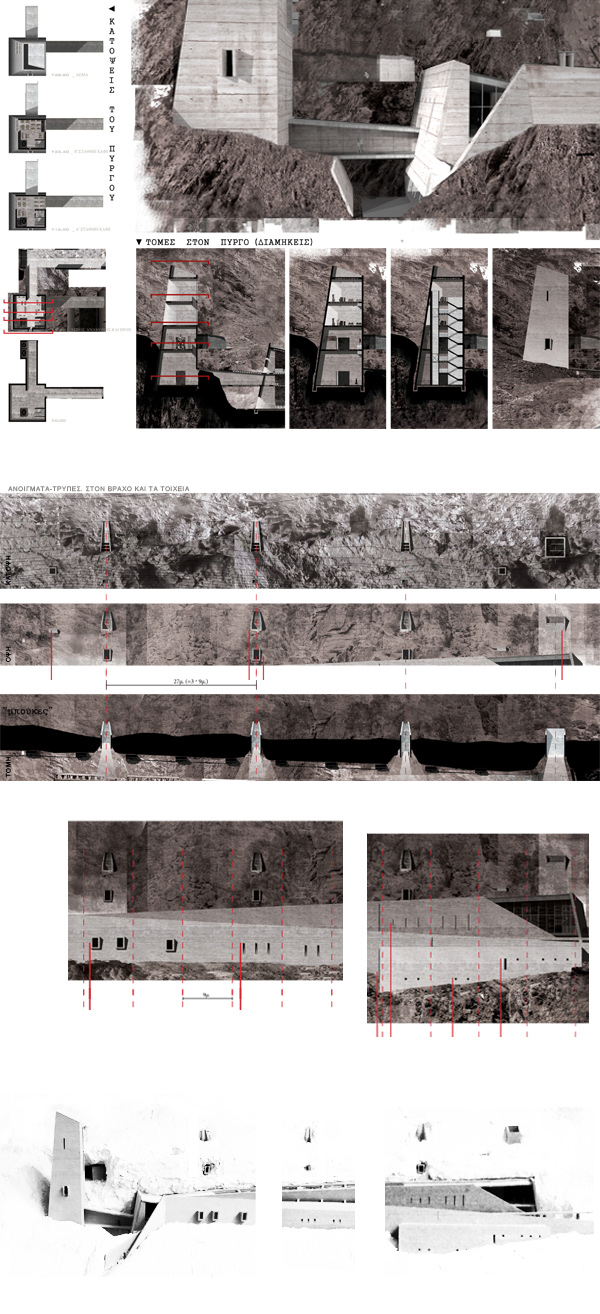


Related articles:
- DESTROY below the ACROPOLIS - VIDEO ( 13 November, 2007 )
- UNDERGROUND MUSEUM IN PALIOURI DIMINIOU OF PHYSICAL DISCIPLINE AND BODY INCARCERATION ( 26 August, 2007 )
- Architectural cannibalism in Athens ( 23 July, 2009 )
- The Acropolis Museum: An Unhappy Fit ( 08 June, 2010 )
- The New Acropolis Museum: A Triumph of Sophistry ( 21 September, 2009 )
- Moderna Museet Malmö ( 10 May, 2010 )
- NEW PATRAS MUSEUM ( 12 October, 2009 )
- NATIONAL RESISTANCE MUSEUM AND MONUMENT TO ELECTRA APOSTOLOU IN NEON HERAKLEION, ATHENS ( 19 October, 2009 )
- Αrchitectural competition ( 13 March, 2009 )
- D. Areopagitou 2008: reformation competition of the rear views of historic buildings towards the new Acropolis Museum ( 25 July, 2011 )
- Small mining museum and centre of environmental research in Itea. ( 17 July, 2010 )
- 3rd Prize for a Greek entry in an international architectural competition ( 20 September, 2010 )
- ATHENS COMICS MUSEUM at Gkazi ( 10 February, 2011 )
- Costume Culture Museum ( 10 February, 2011 )
- Stone Bridge Museum ( 18 September, 2012 )
- “Urban intervention network in Plato’s Academy_A Museum of the city of Athens proposal” ( 10 April, 2011 )
- Transformation of the warehouse of tobacco Papapetrou in an Archeological museum of Aitoloakarnanias and cultural centre of Agrinio ( 08 May, 2011 )
- Los Angeles Museum of the Holocaust ( 15 June, 2011 )
- Archaeological Museum of Arta ( 12 August, 2013 )
- "Earth Museum" ( 05 January, 2012 )
- Venetian Arsnals of Chania ( 24 January, 2012 )
- New Taipei City Museum of Art, Conceptual Design International Competition August 2011 ( 08 February, 2012 )
- Mining Museum in Serifos ( 15 February, 2012 )
- Riverside Clubhouse ( 10 March, 2012 )
- New Glasgow Riverside Museum of Transport ( 24 April, 2012 )
- Enzo Ferrari Museum ( 23 April, 2012 )
- Bunker 599 603 ( 06 May, 2012 )
- Heidelberg Castle’s new Visitor Center ( 24 May, 2012 )
- Grand Egyptian Museum in Cairo ( 22 January, 2013 )
- New Acropolis museum ( 06 January, 2013 )
- All about fish ( 14 February, 2013 )
- Guggenheim Museum in Helsinki ( 22 March, 2013 )
- Noesis. Interactive Museum ( 20 May, 2013 )
- New Acropolis Museum (NAM) ( 07 October, 2013 )
- Danish National Maritime Museum ( 28 November, 2013 )
- The archaeological museum of Ancient Messene and the architectural configurations of the archaeological site ( 08 January, 2014 )
- Redefining Leftovers ( 05 April, 2014 )
- Theatre complex at Koukaki, Athens ( 20 January, 2014 )
- Reformation and rehabilitation of an inactive quarry, with spatial location of uses for Tourism, Recreation and Environmental Education ( 10 February, 2014 )
- Cultural center of Glyfada ( 23 February, 2014 )
- Environmental Center and Cultural Center in Kaiafa’s Lake ( 21 March, 2014 )
- The rack railway museum at Vouraikos gorge ( 18 April, 2014 )
- Museum of underwater antiquities in Chios ( 01 June, 2014 )
- Archaeological museum in Astypalaia ( 03 November, 2014 )
- Art multiplex in the Customs Office area in Palaia, Volos ( 24 February, 2015 )
- Diploma projects exhibition museum of school of architecture ( 02 March, 2015 )
- Lighthouse Museum in Andros ( 20 April, 2015 )
- Archaeological Museum for the Neighbourhood of Plato’s Academy ( 15 April, 2015 )
- Palazzo di Lorenzo’s Museum in Sicily ( 15 May, 2015 )
- New Archaeological Museum of Delos ( 19 July, 2015 )
- Archaeological Museum of Eleftherna ( 01 September, 2015 )
- Historical and Folklore Museum of Nikiti ( 17 February, 2017 )










